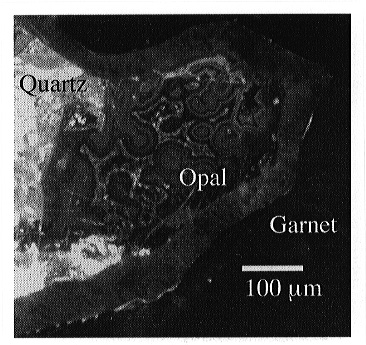

Findings of coesite in regionally metamorphosed rocks demonstrate that significant portions of continental crust have been subducted to extreme depths (>=100 km) and returned to the surface. The tectonic processes responsible for exhumation of these ultrahigh-pressure (UHP) rocks are still incompletely understood. Models for exhumation must account for the partial preservation of coesite. The survival of this phase has been linked to its inclusion in strong host minerals, such as garnet, that can sustain a high internal pressure during decompression. However, extrapolation of experimental kinetic data in combination with elastic inclusion models suggests that coesite should not be preserved on geologic time scales even if reaction to quartz is inhibited until cracking of the host phase occurs at low temperatures (ca. 400°C). Other factors that may be important include the development of transformation stress (see section 3.1e) and catalysis by volatiles. In order to assess the latter possibility, we are using micro-FTIR spectroscopy and cathodoluminescence (CL) microscopy to evaluate the fluid history of coesite and accompanying quartz in UHP rocks from the Dabie Shan (China), the Western Gneiss Region (Norway), the Dora Maira massif (western Alps) and in a xenolith from the Roberts Victor Mine (South Africa).
In all cases investigated so far, OH concentrations in natural coesite are below the detection limit of FTIR (<1 H/106 Si). Quartz replacing coesite, however, contains variable amounts of hydrogen up to 3000 H/106 Si, mostly incorporated as H2O in fluid inclusions. This implies one of two possibilities: (1) strong partitioning of H between coesite and quartz during the transformation; or (2) fluxing of reaction in "dry" coesite by fluids that infiltrate during cracking of the host phase. CL of coesite inclusions in pyrope from the Dora Maira reveals several generations of silica polymorphs, including opal (Fig. 3.4-5), suggesting that fluid infiltration occurred at very low temperatures at which reaction, even in the presence of large amounts of fluid, was slow enough to allow partial preservation of coesite. Furthermore, quartz in the matrix of a Dabie Shan eclogite, which preserves an unusual microstructure similar to that seen in intermediate stages of experimental transformation, contains abnormally low H2O concentrations (0-130 ppm H/Si). These data point to the importance of fluid infiltration in driving the reaction.
Further work will be aimed
at constraining the range of P-T-time paths that allow preservation of
coesite, using a combined approach: (1) re-evaluation of the elastic inclusion
models; (2) additional kinetic experiments with varying trace volatile
contents; (3) further FTIR study of natural rocks; and (4) experimental
investigations of the equilibrium solubility of OH in coesite and partitioning
of OH with other phases.
 |
|

Tel: +49-(0) 921 55 3700 / 3766, Fax: +49-(0) 921 55 3769, E-mail: bayerisches.geoinstitut(at)uni-bayreuth.de
 Previous page
Previous page